
Yoga is one of the most beneficial alternative therapies to help you slow down the progression of Parkinson’s Disease (PD). Practicing regular yoga can have a significant influence on your central nervous system, which primarily causes Parkinson’s.
Yoga practices are even helpful in reducing your tremors, increase flexibility, range of motion, gain more control over your muscles, your physiology, and improve overall motor functions.
What happens in Parkinson’s Disease (PD)?
Parkinson’s is a disorder of the Central Nervous System, which causes progressive degeneration of dopaminergic neurons in the midbrain, leading to altered motor movements.
Your movement is controlled by your nervous system, which functions due to the electrical transmission between nerve cells. These electrical transmissions take place by the exchange of neurotransmitters between two nerve cells, or neurons.
Different neurotransmitters carry different messages. One such neurotransmitter is dopamine. Dopamine is responsible mostly for reward-motivated behavior, which includes a whole range of executive and motor functions.
In Parkinson’s disease the nerve cells that produce dopamine, die progressively. And unfortunately, the existing number of these cells are already pretty low. The human brain has only, around 400,000 dopamine-producing neurons.
Yoga cannot help you stop the degeneration of neurons, but it can surely help you slow down the process and manage the symptoms of PD. As a matter of fact, that is precisely what any other traditional medication or therapies attempt.
Yoga can reduce Parkinson’s symptoms
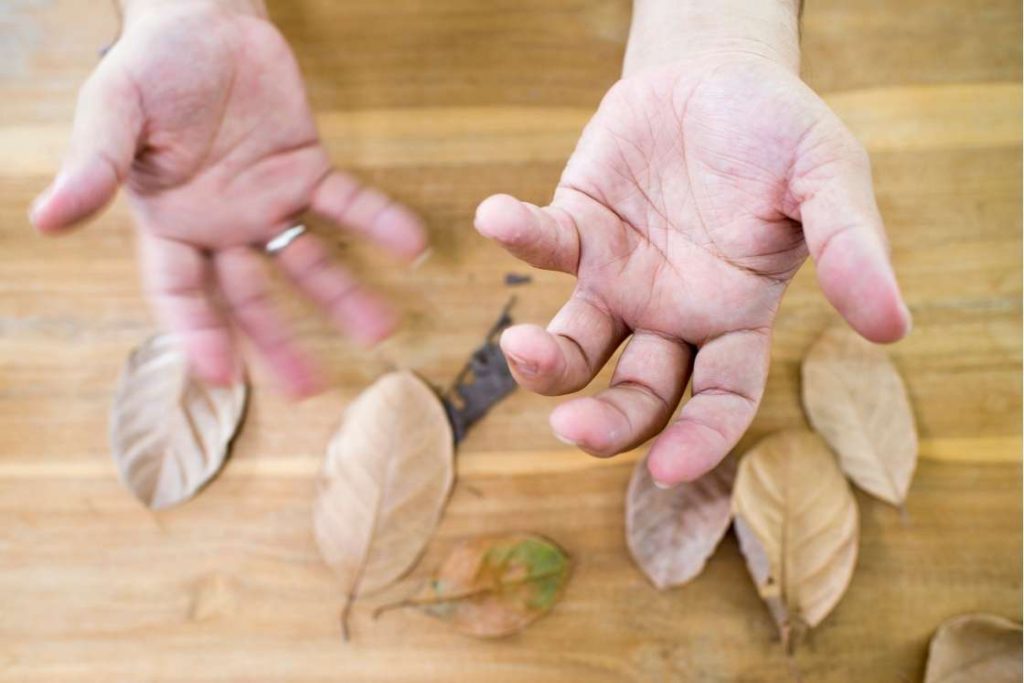
Remember that stimulation and inhibition are two activities that regulate most of the nervous functions. Thus any physiological disorder of the nervous system, like PD, can always be supplemented with some external stimulation. And that is what yoga does, provide the much-needed external stimulation of the CNS, to Parkinson’s patients.
Yoga poses might not increase or stop the degeneration of neurons. But what yoga can do is slow down the degeneration process, and stimulate the existing neurons to produce dopamine to their maximum potential. This basic boost can help you manage most of the major Parkinson’s symptoms.
A particular study on Yoga’s efficacy on Parkinson’s disease revealed, that an eight-week yoga intervention improved motor functions, balance, gait, and freezing of gate. The research indicated that yoga can be successful in reducing fall risk in individuals with PD [efn_note] Marieke Van Puymbroeck, Alysha Walter, Brent L. Hawkins, Julia L. Sharp, Kathleen Woschkolup, Enrique Urrea-Mendoza, Fredy Revilla, Emilie V. Adams, Arlene A. Schmid, “Functional Improvements in Parkinson’s Disease Following a Randomized Trial of Yoga”, Evidence-Based Complementary and Alternative Medicine, vol. 2018, Article ID 8516351, 8 pages, 2018. https://www.hindawi.com/ [/efn_note].
In the following ways yoga can benefits patients of PD reducing its symptoms.
1. Yoga reduces tremors and rigidity
Tremors are the most prominent symptoms in Parkinson’s, especially the pill-rolling tremors of the hands. And equally prominent are the limb rigidity; the cogwheel rigidity of your hands and the lead-pipe rigidity of your legs.
There are neurons in your brain that try to counter the effects of dopamine. However, in a healthy brain, a balance is always maintained with the right levels of dopamine. Naturally, in Parkinson’s when this balance is disrupted, it causes tremors and rigidity.
Yoga poses and pranayama will stimulate different parts of your CNS to have an aggregate effect of increased dopamine levels. The increased dopamine levels will restore the balance, reducing the degree and frequency of tremors and rigidity in Parkinson’s Disease.
2. Yoga helps lack of motion
Lack of motion or motor activities is a very threatening and challenging issue in Parkinson’s. This symptom occurs when there is an extreme drop in your dopamine levels, and most of the stimulative activities between your neurons are replaced with inhibitory activities.
Lack of motion occurs when your nerves are mostly inhibited from moving your muscles. Yoga twists and stretches can stimulate the dopaminergic neurons in your midbrain to bring up dopamine levels.
The efficient production of dopamine will help you maintain the right balance of stimulation and inhibition between various nerve cells. This will enable appropriate contraction and relaxation of your muscles. As a result motion and movement will be restored to your muscles.
Studies related to the intervention of yoga therapy on motor function in people with Parkinson’s Disease have also shown promising results.
One such study has found that yoga training gave patients with Parkinson’s, greater flexibility in hip flexion, knee extension, and shoulder flexion. In hip extension and abduction increased muscle strength was also noted [efn_note] Colgrove YS, Sharma N, Kluding P, Potter D, Imming K, et al. (2012) Effect of Yoga on Motor Function in People with Parkinson’s Disease:
A Randomized, Controlled Pilot Study. J Yoga Phys Ther 2:112 https://www.researchgate.net/profile/Yvonne-Colgrove-2/ [/efn_note].
3. Yoga helps speech difficulties
Yoga on stimulating the dopamine-producing neurons lets nerves function efficiently to control your tongue, facial muscles, and other vocal apparatuses in PD patients.
Lack of dopamine causes the nerves that control vocal apparatuses, to malfunction. Yoga will not only take care of the vocal system but also the nerves that control your respiration. After all, your speech starts from where the airflow starts, your lungs.
4. Yoga remedies confusion and depression
Dopamine is also the key to the feeling of satisfaction, pleasure, and thought clarity. Naturally, when the cells producing dopamine start to die, one starts to face depression and confusion i.e. what happens in Parkinson’s disease.
Yoga not only stimulates the midbrain but also induces sound sleep and a stress-free state of mind. Which in turn encourages an increase in dopamine production in people with Parkinson’s disease.
Studies have revealed that yoga can show improvement in non-motor symptoms like memory, stress, depression, and anxiety, in just initial 6 weeks of training. [efn_note] Sharma NK, Robbins K, Wagner K, Colgrove YM. A randomized controlled pilot study of the therapeutic effects of yoga in people with Parkinson’s disease. Int J Yoga. 2015;8(1):74-79. https://www.ncbi.nlm.nih.gov/ [/efn_note]
5. Yoga remedies urinary and bowel irregularities
Although, not a signature symptom of Parkinson’s, yet patients of PD do suffer urinary and bowel disorders. Now, this is primarily because your bowel and urinary movements are automated by your nerves.
Thus, with most fundamental nervous disorders our urinary and bowel systems take a hit. Yoga poses will help your nerves to establish proper movement in your abdominal tracts, organs, and muscles.
You will find yoga poses that work specifically on the abdominal region. And you will find yoga poses that primarily stimulate your CNS, but indirectly benefits your gut surroundings.
What type of yoga poses are good for Parkinson’s Disease?
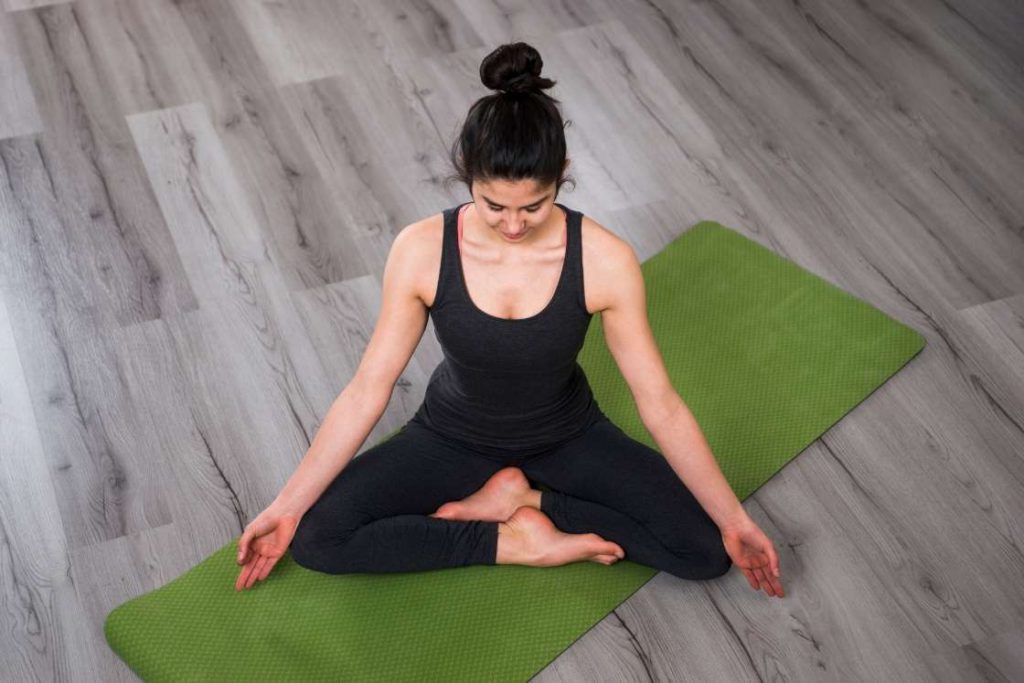
For a Parkinson’s patient, yoga should be all about establishing muscle nerve coordination, mind-body awareness, and stable body movements.
To get the most of yoga benefits for Parkinson’s Disease, you will have to practice specific yoga poses that focus a lot on slow regulation of your muscles, and a couple of direct CNS stimulating poses. For example, seated or assisted yoga postures.
With a lack of muscle control and stability, you will obviously have to look into the most minimalist poses. The poses must not only require minimum physical effort but also have basic movements.
Remember, while practicing the yoga poses in Parkinson’s, be patient. Do not rush the poses. Take extra time and make the movements really slow. Slow movements will be a better stability exercise for your nerves and muscles.
These basic yoga poses are very effective for Parkinson’s Disease.
1. Mountain pose – Tadasana
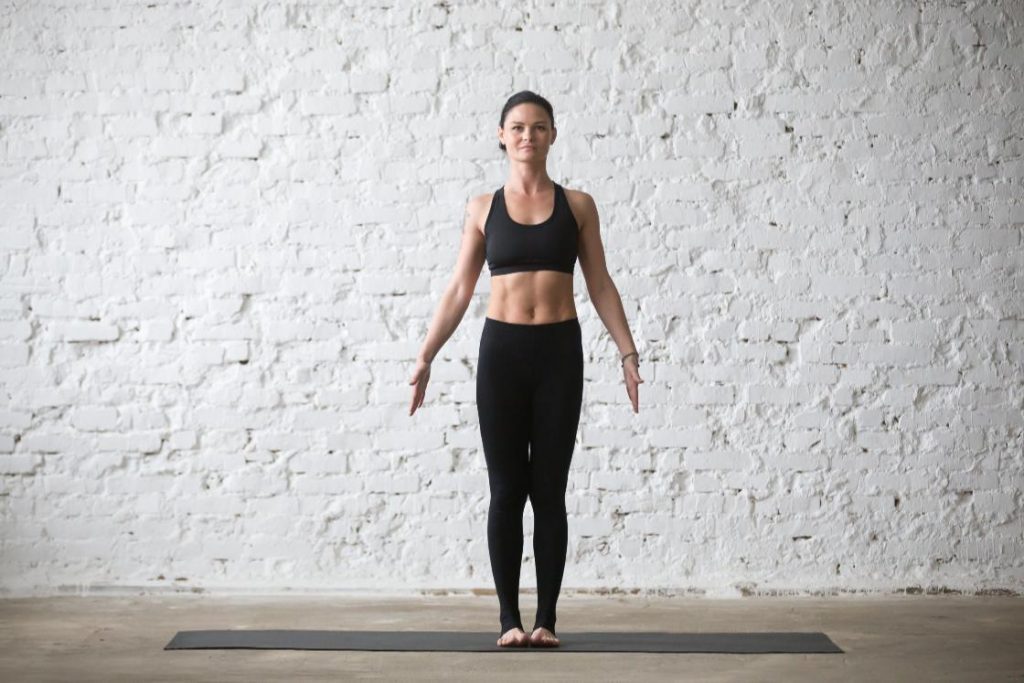
The mountain pose is the best pose to begin your routine with. This pose will help you bring stability to your muscles, and reduce your tremors. The mountain pose hold all your bones, spine, muscles, and nerves in their ideal position. As you practice this regularly, you will find the shaking reducing significantly. Mountain pose will also improve your posture and body awareness.
- Stand straight, with your hands straight by your sides. Keep your palm open, pointing down and facing front. Legs should be hip-width apart.
- Keep your spine erect.
- Head pressed back with the back of your head aligning with your tailbone.
- Shoulders pressed down and chest puffed out.
- Try to stay fixed, balance your weight equally on both feet, and do not wobble.
- Breathe steadily, and try to stand for a minute.
Mountain pose might seem easy, but if you have less balance and motor functions in PD, standing steadily without wobbling for a minute can be challenging. Practicing this is going to be a great exercise for your nerves.
2. Standing forward bend – Uttanasana
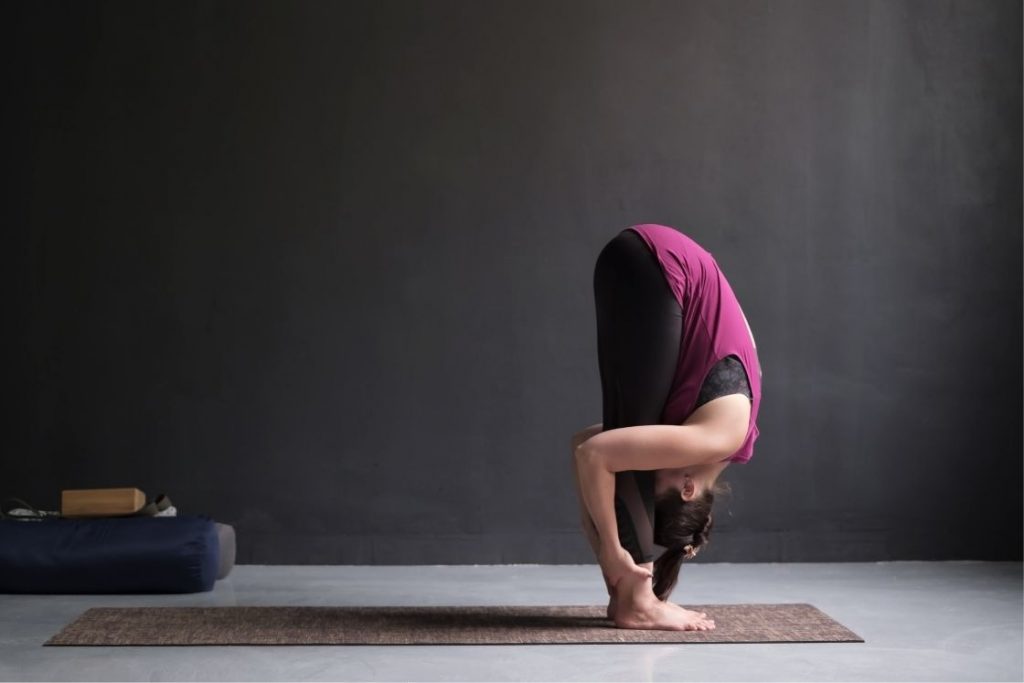
The standing forward bend will help you develop more control over your muscles. This pose will help you increase your mobility and flexibility. Restricted movement and rigidity that are signature symptoms of Parkinson’s, could be reduced by this pose. The standing forward bend will restore your control over your lower back, hip, and leg muscles.
- Stand straight in a mountain pose.
- Keep your legs hip length apart, and upper body erect.
- Now bend your body from your groin region, and bend forward your upper body.
- Bring your upper body down without bending your knee.
- Try to touch your forehead to your knees.
- Try grapping the sides of your knees and support pull your bend. This will help you make up for the lacking muscle strength, and focus on the stretch.
- Hold your pose for 5 breaths or 10 counts and release.
- Repeat the pose thrice
It will be easier to bend down in one swift motion, but do not do it. Bend slowly, containing the pressure build up throughout your body. This pressure build up will open up your muscles and stimulate your nerves.
3. Seated cat-cow
Cat/Cow pose is primarily a pose for your spine and the CNS. It also improves the gut surrounding muscles, which control your bowels and urinary. However, the original variant requires a greater range of body movements. Chair yoga variant of cat-cow pose makes it considerably easier to execute for someone with Parkinson’s.
- Sit on a chair with a seat plane and parallel to the ground.
- Slightly move towards the edge of the seat.
- Sit straight with your spine erect.
- Keep your hands on your knees.
- Inhale and slightly tilt up your head, and push out your chest.
- Your shoulder blades pressed against each other.
- Exhale and tilt your head down, and suck your belly, way back in, against your spine.
- Your shoulder blades open, and shoulders rolled Infront.
- Repeat these steps slowly, in a loop, for about 10 loops.
As you alter your spine position, you will have to adjust your sitting bones as well. As you suck in your belly, allow yourself to slightly slide back in the chair.
4. Seated spinal twist
This is another chair yoga pose that is recommended for a person with Parkinson’s Disease. It’s a complementary pose to the Cat/Cow. They go pretty well together. As the Cat/Cow deals with back and forth arching of your spine, the spinal twist involves sideways twists.
By practicing both these poses, you will have a complete simulation of the spine and abdominal nerves. The supine spinal twist has a greater degree of physical difficulty, thus the seated version is recommended for Parkinson’s patients.
- Sit on a chair, with spine erect.
- Take a few deep breaths to warm up your body, and provide your muscles with fresh blood.
- Sit towards the edge of your seat.
- Slowly twist your upper body from your torso towards your left.
- Twist upto 90 degrees and lock your position.
- Hold the left side of your seat with your right hand, and extend out your left hand over the back rest of your chair.
- Hold your pose for 15-30 seconds, and repeat the twist to your right side.
Since you will be holding the chair rest, you will feel an extra support. You might feel like increasing your twist. But, in the initial days of your practice, keep the twist strictly fixed to 90 degrees.
5. Seated Camel
This pose has a very straightforward influence on increasing your dopamine levels.
Seated camel stimulates the upper part of your spine, your neck, base of your brain, and the brain itself. Apart from its stimulation benefits, it will also be quite effective at stress management and sound sleep. This pose will also stretch your respiratory and cardiovascular muscles and nerves.
- Sit on a chair, at the edge of the seat, with erect spine.
- Go to the absolute edge of your chair.
- Take a few deep breaths and warm up your muscles.
- Hold the back of your seat with your hands.
- Pull on the seat with your hands and push your chest, abdomen, pelvis and spine Infront.
- Let your shoulder blades firmly press against each other, and your shoulders roll back.
- This posture should create a backward arch in your spine.
- Look up, but do not arch your head back.
- Take 5 breaths and release your pose.
- You can do the pose 3 times if you feel comfortable.
You will have to be careful with your head and neck region. Ensure there is no unusual tension build up. If you wish keep your head movement minimum, but not stiff. Before the camel pose you can do a bit of freestyle warm up rotations for your head and neck.
6. Legs up the wall
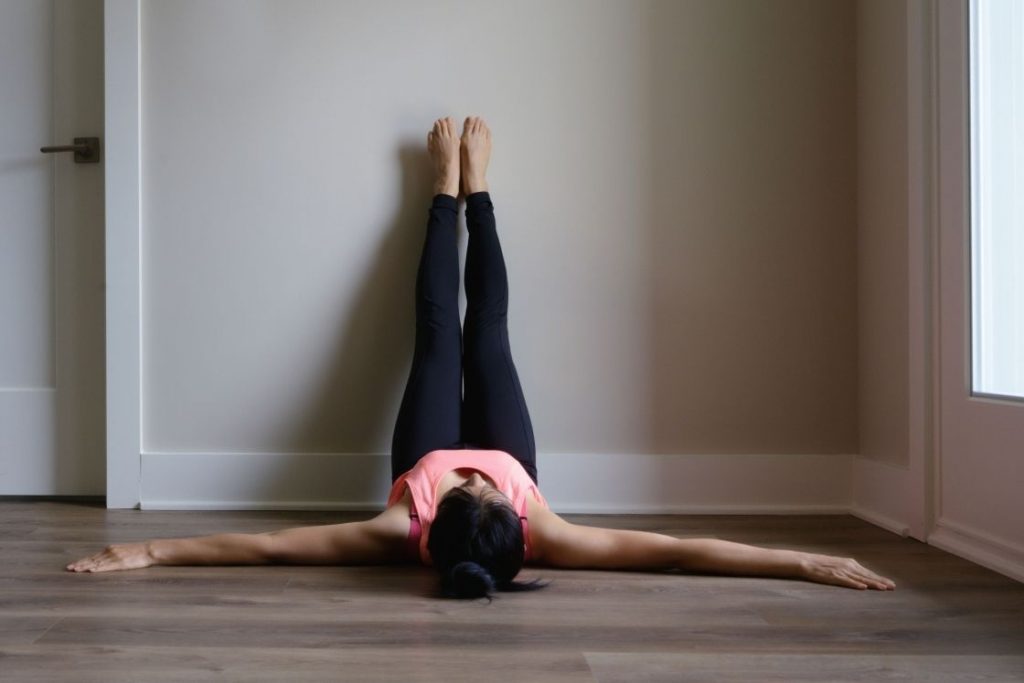
Legs up the wall pose, aka Viparit Karani, is the best pose to improve your leg’s rigidity and mobility in Parkinson’s Disease. This pose will also enhance your circulatory system, which will nourish your muscles, bones and even the brain. Legs up the wall is also a very restorative pose that can heal injuries along your neural pathways.
- Sit against a wall, with your right side to the wall.
- In one clean motion, roll over to your right, and lie on your back, putting your legs up the wall.
- Keep your legs stretched up.
- Keep your legs pressed against the wall.
- Straightening your legs will take a bit of effort, gently push your knees to straighten.
- Keep your hands stretched out to your sides.
- Breathe steadily and relax.
- You can stay in this pose for 30 seconds.
Ideally, your sitting bones should hang, however, if that feels uneasy you can set up thin support at the wall-floor junction. You can use this support to rest your sitting bones on, during the pose. It will be easier to adjust if you place it in the support after you have entered the pose.
Supplementing your yoga routine
Yoga itself is considered an alternative therapy. And there are many other such alternative therapies that help the condition of Parkinson’s. One such therapy is music therapy, and combining it with yoga can be an excellent idea.
A report from Parkinson’s Foundation has shown that certain systematically composed music can have a monumental impact on your brain [efn_note] Feel the Rhythm: Music Therapy and Parkinson’s Disease https://www.parkinson.org/blog/research/Music-Therapy-Parkinsons-Disease-Feel-Rhythm [/efn_note]. You can incorporate such music in your yoga sessions to enhance the benefits of yoga.
Apart from this, you will need to be watchful of your food as well. You need to have a balanced diet, to keep your other bodily functions healthy. An overall healthy and energized individual will have more ability to fight the symptoms of Parkinson’s.
Finally, you will have to learn to develop mind-body awareness, which yoga can help you with. This awareness will not only establish better transmission along your neural pathways but also help you realize your condition.
It is said that no two Parkinson’s patients are the same; they all have certain uniqueness to their symptoms. This means there have to be subtle differences in treatment as well. Increased awareness will help you manage your condition in a way ideal to your condition.
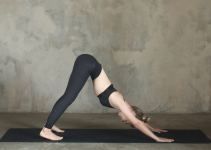


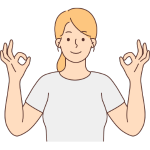
 Oct 27th to 2nd Nov
Oct 27th to 2nd Nov Learn Mudras
Learn Mudras  Deepen Your Practice
Deepen Your Practice  Find Inner Peace
Find Inner Peace